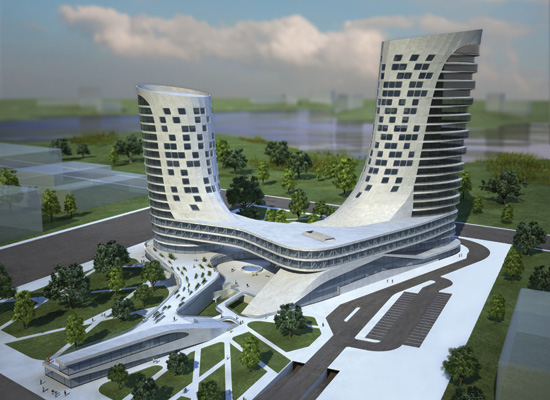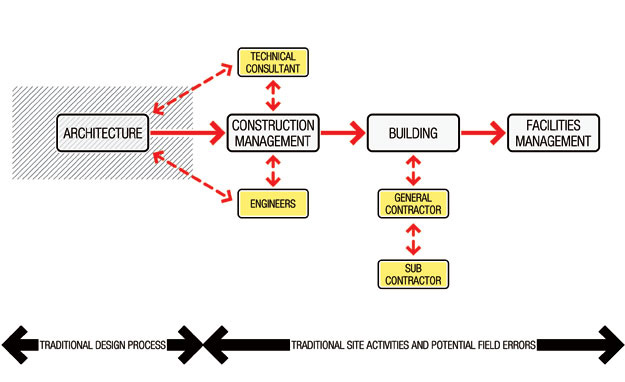Building Information Modeling as a Design Process
Learning Objectives:
- Investigate building information modeling (BIM ) and the creative design process as part of the same overall workflow of building design and construction rather than separate actions.
- Recognize BIM as a process, not simply a software program, which can be used to improve the design and safety of buildings.
- Assess the ways other building designers are embracing a BIM workflow and incorporating BIM as an integral part of the design and construction process.
- Differentiate between a traditional 2D documentation process and a 3D building information modeling workflow.
Credits:
What does an architect do? Many architects contend that the general public and indeed some clients don't really know since they often answer that question in limited terms of “design buildings” or simply “do the drawings.” Those within the profession or those engaged with building design on a more regular basis understand a broader scope of an architect's activities ranging from feasibility/programming work, to information analysis, design synthesis, construction documentation, construction oversight, and even facilities management interface. Of course, not all architects do all the same things since they are quite good at adapting and adjusting to the specific needs of clients, employers, projects, locations, or work processes. There is also a big difference between working for a series of unique clients, each with a single project such as churches or museums, compared to working with an ongoing, repeat client to produce dozens of projects over time such as retail or hospitality facilities. Some architects don't work in traditional firms; rather, they apply their talents within organizations such as government agencies, commercial corporations, non-profit entities, or educational institutions. And of course, not all projects developed, regardless of the owner, are new buildings since a majority of design and construction work in the United States is focused on the renovation of existing buildings. Despite all of these differences and variables, there is one thing that all design professionals have in common—namely, engaging in a process with building owners and other professionals to create a design, whether simple or complex, that becomes the basis for construction work to take place and the design to become a reality.
The Design Process
What is the design process? The answer to that question is about as individual and personal as they come. Different design professionals will have different starting points. Some will begin with information and data, others will start with an intuitive approach, and still others may use an external inspiration. The methodology to develop a design is also varied and often quite personalized. Some use words and numbers while others choose pencil drawings, cardboard models, computer software, or a combination thereof. Some assume that many different design options need to be looked at while others limit themselves to a preferred concept and develop it in detail from there. Hence, it is easy to see why the actual design process varies between firms or organizations and even among people within those organizations.

Image courtesy of GRO Architects, PLLC
New York City-based GRO Architects is using building information modeling (BIM) to design the CNBM World Headquarters building in Bengbu, China. They are among a growing number of firms that are using BIM from the earliest stages of design through construction.
Adding to this mix of variables in the process is the latest advancement in design resources available, namely building information modeling (BIM). While much has been written and many people have been involved in creating and using BIM tools for the past few decades, there are still a number of misperceptions about what it is and how it fits with the process of design and construction. Those who are able to set aside preconceived notions and open up to the possibilities that BIM provides as a genuine design tool can discover transformative ways to look at what architects do and find truly exciting new options for creative solutions that may not have been thought of before.

Image courtesy of Richard Garber, AIA, and GRO Architects, PLLC
The traditional, 20th-century process of design and construction typically separated the architects from the contractors and in many ways diminished the role of the architect.









